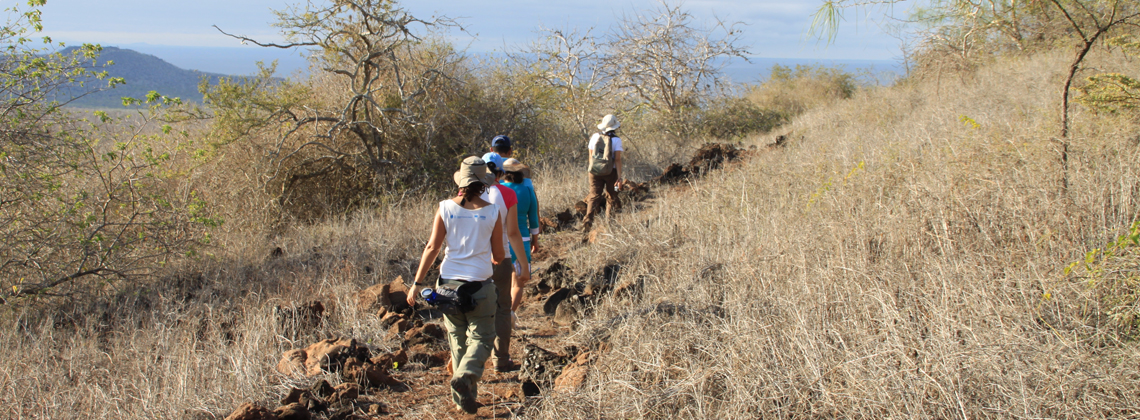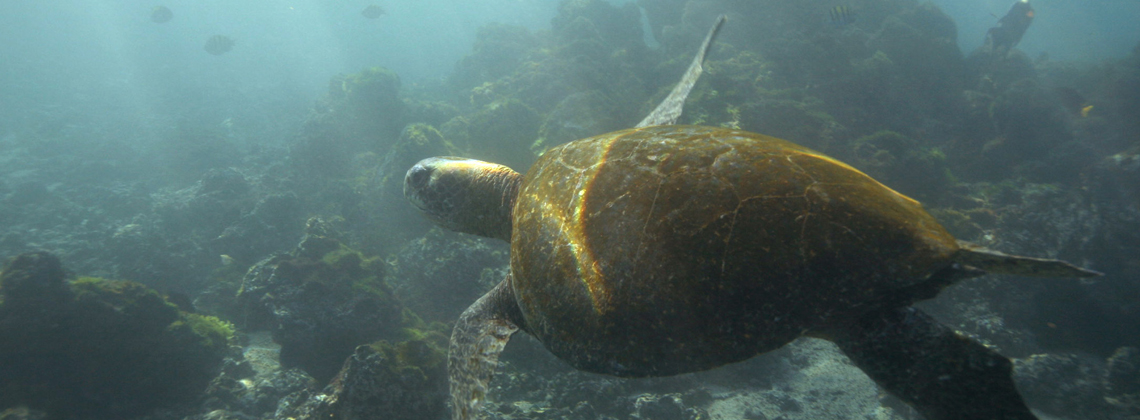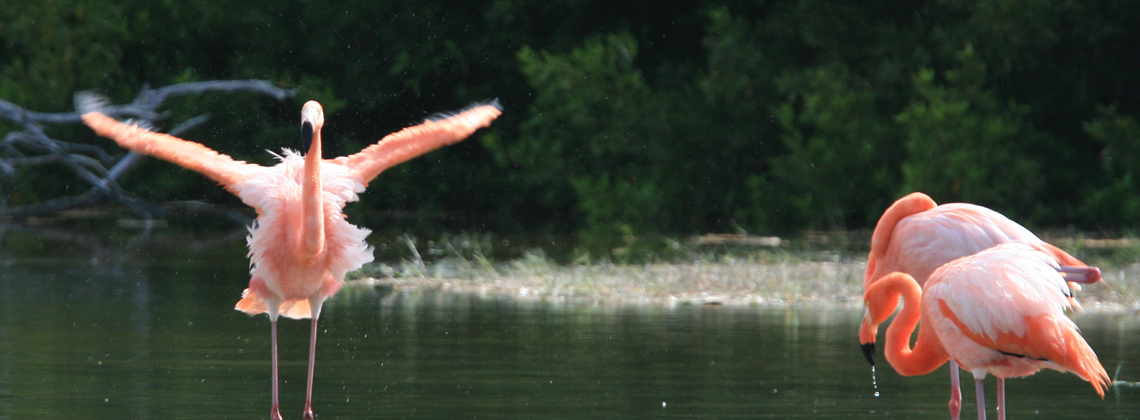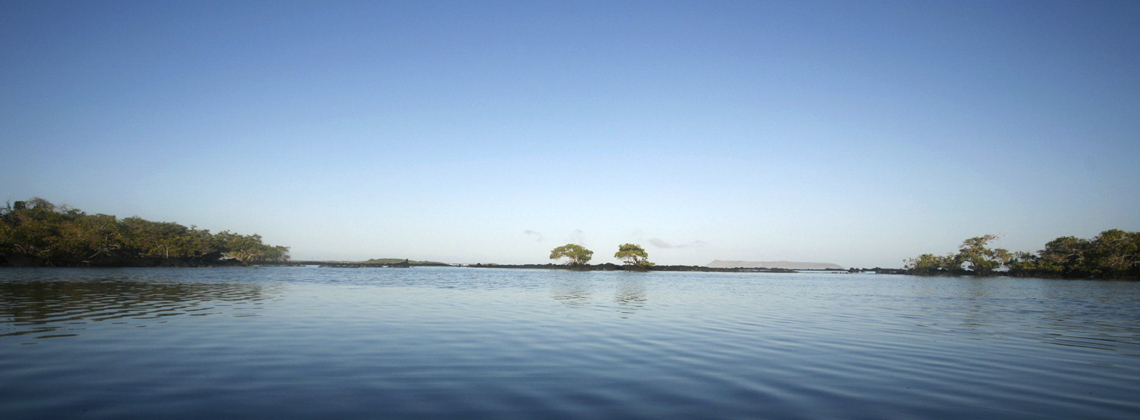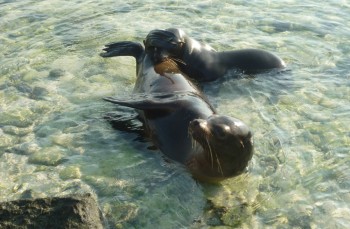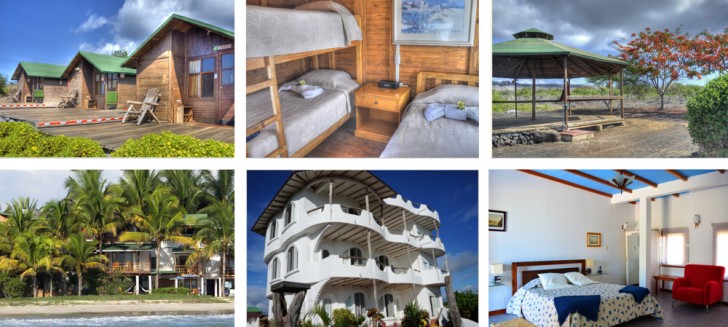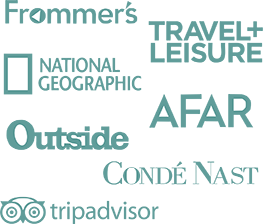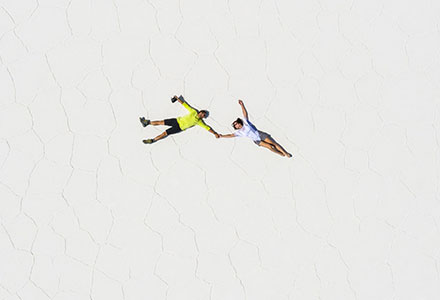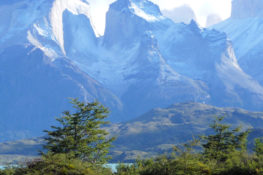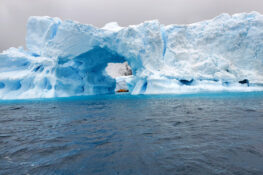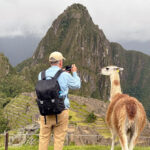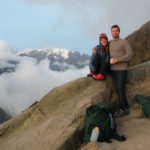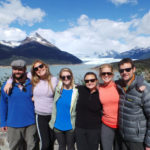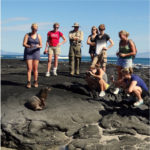DAY 1 Quito – Galapagos
Getting an early start to the day, you will be picked up at your hotel and taken to the Quito or Guayaquil airport in accordance with your morning flight to the Galapagos Islands. You’ll be flying to the small island of Baltra, the main airport in the Galapagos and the world’s first ecological airport. Upon arrival, you’ll first pass through an airport inspection point where your TCT (Transit Control Card) will be checked and stamped (please keep this in a safe spot with your passport as you will need to show it again when you leave Galapagos).
You will be met at the airport by an expert local guide and taken to Santa Cruz Island using public transportation (no private vehicles are permitted). Santa Cruz is home to one of the Galapagos’ only modern towns, lava tunnels, white sand beaches and the massive land tortoise. Here is where your adventure begins. You’ll first visit two enormous collapsed lava chambers, or Los Gemelos craters, and get your first look at the highland Galapagos tortoises. In the afternoon, enjoy a tasty lunch on your way to the town of Puerto Ayora, where you’ll take a private speedboat on a two-hour ride to the peaceful and unspoiled island of Floreana.
Here you’ll be staying for two nights in your own private oceanfront cabin. You may take a short walk to La Loberia, a scenic beach and sea lion breeding ground and/or snorkel or swim in the clear blue water alongside sea turtles, sea lions, rays and a variety of colorful tropical fish. In the evening you’ll have dinner in the village before watching a beautiful sunset followed by incredible star gazing from your cabin’s front porch.
Day 2 Floreana
After breakfast you’ll head by chiva, an open-air bus, up to the highlands. During the drive your guide will begin to teach you about Floreana’s colorful history filled with pirates, mysterious deaths and fascinating first inhabitants. Reaching the highlands, you’ll begin your hike at Asilo de la Paz (Peace Haven), a site where you can explore pirate caves and a freshwater spring that provides water for the entire Island. As you hike down, you’ll see giant tortoises lumbering around in the vegetation or even on the trail. At the end of your hike, you’lll be rewarded with views of frigate birds ‘dancing’ as they wash their salty wings in the fresh water. With a little bit of luck, you may see the males puffing up their red pouches on their chests in an attempt to attract females.
Continue by chiva down towards Las Palmas, where the Island’s first permanent inhabitant, the eccentric Dr. Ritter, lived and is buried. Arriving in 1926, this German physician believed that with a combination of exercise and the right vegetarian diet he would live to be 150 years old. He didn’t, but his story is one of the many strange episodes that still abound on the island. Continue down past spectacular views of Floreana’s shoreline until reaching your special BBQ lunch spot. After lunch, enjoy some time to relax, swim, snorkel, kayak and/or stand up paddleboard at your lodge.
Day 3 Isabela
Getting an early start, you’ll head to Isabela Island today by private speedboat. Upon arrival, check in to your beautiful beachfront hotel. Isabela Island is a piece of paradise with its white sand beaches and incredible wildlife. Start exploring this paradise with a visit to Tintoreras, a group of small islands that are often called the ‘Galapagos in miniature’ as you can see nearly all of the archipelago’s iconic wildlife in this one spot. Its beautiful blue turquoise waters are home to sea lions, sea turtles, marine iguanas, rays, white tipped sharks, penguins and much more. Snorkel in the bay, and if you’re lucky, a few penguins or sea lions may jump in to play alongside you in the water.
In the afternoon walk along the trail from town, through the brackish-water lagoons and ending at the local giant tortoise-breeding center. Keep an eye out for pink flamingos feeding in the lagoons. Thanks to this breeding center, the islands’ giant tortoise population is slowly recovering after years of poaching. Once at the center, you can see hatchlings and full-grown tortoises as you learn about the process of breeding and releasing into the wild.
Day 4 Isabela
Isabela is one of the youngest and most volcanically active islands in the Galapagos. Today, as you hike and explore Isabela, you will get a close look at the geologic process that created the Galapagos.
A morning hike up the misty slopes of Volcan Sierra Negra (1,300 ft) will take you to the rim of the second largest crater in the world, spanning four miles across. A common morning fog and drizzle will clear as you reach the crater’s rim and are rewarded with expansive views of the volcano’s black lava floor. From here, hike the path along the rim. As you head towards Volcan Chico, you may get the feeling you are walking on Mars, but while the landscape appears desolate, a closer look reveals small lizards, scurrying about amongst the rocks.
Enjoy a tasty picnic lunch under the shade of a lovely jaboncillo tree with the chance to enjoy some spectacular views over the central and northern parts of Isabela Island. In the distance, you will be able to see Fernandina, Pinzon and Santa Cruz Islands. Head back down to shore to complete your day of hiking (about 10 miles). End the day relaxing on the white sand beaches of Puerto Villamil.
- B, L, D – Casa Marita or similar, suite
Day 5 Wall of Tears and Kayaking
Leaving from the Villamil dock, you’ll kayak to Island Bay, looking for turtles, rays, penguins, blue-footed boobies and sea lions along the way. Sea lions may play in the water and paddle along side you. Watch for wildlife in the bay, and then paddle back to the dock.
After lunch, bike the Wetlands Trail taking you to historic sites and stunning beaches. On this fun network of trails you’ll have beautiful views of the village below as you bike past marine iguana colonies, different types of mangrove trees, unique birds and with luck, some wild giant tortoises.
At the end of the trail, you will have the chance to learn about the Wall of Tears, built by Second World War prisoners held at a US base on the islands. Your guide will explain the importance of the Wall of Tears, giving you a glimpse into the lives of the island’s previous inhabitants. Before heading back to town, stop at a local swimming hole for a refreshing dip. End the day with time to swim, snorkel or just sit on the beach and relax.
- B, L, D – Casa Marita or similar, suite
Day 6 Santa Cruz
Today you’ll start early and catch your speedboat back to Santa Cruz Island. Upon arrival, enjoy a hearty breakfast close to the docks before heading up to the highlands for a busy day of multi sport adventures. First, drive up to an off-the-beaten-path area of Santa Cruz Island where you will switch to mountain bikes for a long downhill glide on freshly paved roads to the beautiful yet little visited Garrapatero Beach. On the ride, pass by small farms and enjoy spectacular views of the ocean and distant islands.
Arriving to Garrapatero Beach, you may see some local families enjoying the water, but few, if any, tourists. Paddle in the bay on sit-on-top sea kayaks, enjoying your last day on the water in the Galapagos. Look for sharks, rays, turtles, and sea birds in the clear blue waters. Later enjoy a specially prepared lunch before heading back to Puerto Ayora.
Once back in town, you will have the option of staying and shopping for souvenirs, or (if time allows) walking the 3 km boardwalk to Tortuga Bay, and checking out one of the largest and most beautiful beaches in the Galapagos. At Tortuga Bay you can walk on the beach, swim, or even snorkel a bit more.
Tonight you’ll stay in Santa Cruz’ largest town, the small picturesque port of Puerto Ayora. Although it has the largest population in the Galapagos, Puerto Ayora is still a small, intimate place where you will find friendly local bars, shops, and restaurants, as well as places to stroll along the water’s edge. There is everything you need for a final farewell night in the Galapagos.
Day 7 Galapagos – Quito – Home
After a morning visit to the Charles Darwin Research Center, you’ll transfer to Baltra for your return flight back to mainland Ecuador. Upon arriving in Quito or Guayaquil you will be responsible for checking in for your evening overnight flight home, or onward.

